When you think of fruits that start with K, then there might be kiwi and key lime coming to mind.
However, there are a lot more fruits beginning with the letter K. Some of them are lesser known, while others are commercially available around the world.
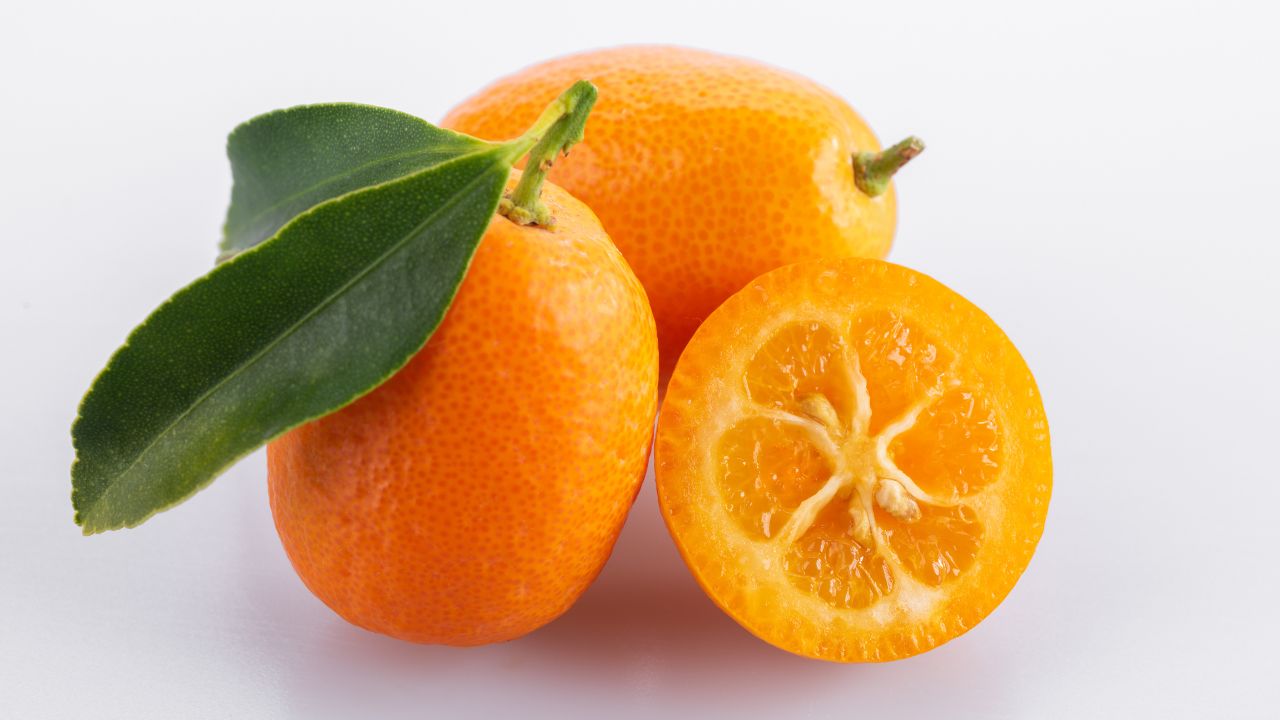
In this article, we take a closer look at 23 fruits that start with K.
1. Kaffir Lime
Lime is one of the best summer fruits. You can squeeze some lime juice for a delicious cocktail or just add it into your zesty desserts.
Kaffir lime is a green lime fruit that comes originally from Southeast Asia where the winters are mild and summers are hot.
Kaffir lime fruit is round and green. It peels easily just like other lime and lemon varieties. You can even use the lime peel for a beautiful citrus oil.
This type of lime fruit is smaller than other varieties but this makes it more aromatic. A perfect addition to sweet and savory dishes.
2. Kabosu Fruit
Kabuso fruit is native to Japan where it is one of the most important Japanese foods.
While kabuso looks like a tangerine on the outside, it has a more spherical shape. Its taste is quite unique but mostly sour.
That’s why, kabusos are often eaten in Japan with a mix of other sweeter fruits, such as oranges.
Despite its sour flavor, kabuso fruit has a variety of uses.
You can turn it into juice and add it to your rice to make kabuso rice. This is typically a key ingredient in Japanese tangerine sashimi.
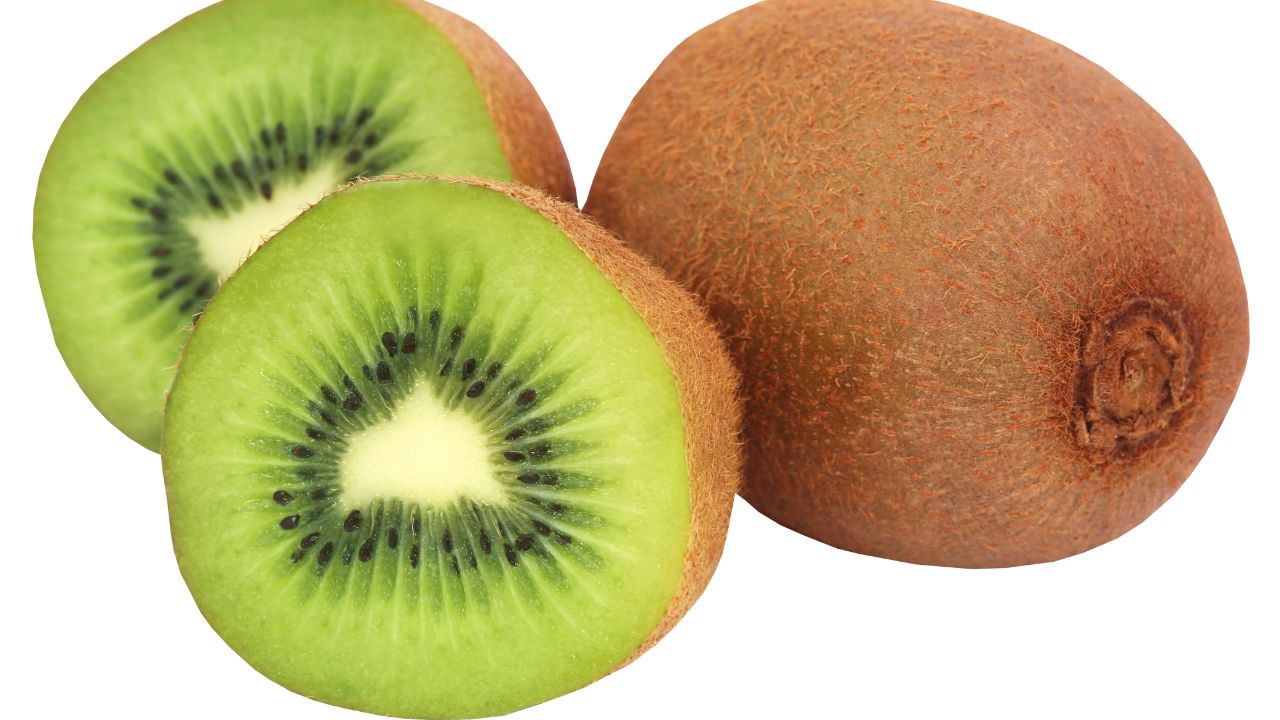
3. Kiwi Fruit
Kiwis are a world-famous fruit from New Zealand where they are picked from late spring to fall.
But kiwi fruits aren’t just grown in New Zealand. They are also cultivated in parts of China, France and Australia.
A kiwi has a fuzzy, brown skin with a green flesh that is slightly sour and sweet. Thanks to the large amount of vitamins in kiwi, this fruit is a big natural immunity booster.
4. Knobby Russet Apple
As the name suggests, the knobby russet apple has a slightly knobbly appearance. It is widely known as the ugliest apple.
While the brownish-green skin doesn’t look appetizing, this apple has a creamy flesh that contains a lot of iron, calcium and vitamin A.
These apples have a sweet but tart taste which make them fantastic cooking apples.
5. Kapok Fruit
Kapok fruit isn’t known for its taste but it actually provides many parts of the world with silk cotton and cotton.
Kapok has an elongated shape with a firm, green skin which turns brown when the fruit ripens.
But it’s all about what’s on the inside of this Malaysian fruit. It contains small white, fibrous seeds and soft cotton fluff.
This fluff is an essential stuffing material for mattresses and pillow. In addition, some people also use kapok as a traditional medicine to control bleeding and lower fever.
6. Kei Apple
The Kei apple comes from the regions near the Kei river in South Africa. It has a round shape and it’s much smaller than a traditional apple variety.
A Kei apple is the size of a plum but it has a orange color. This apple variety also small seeds with a yellow flesh inside.
When you look at a Kei apple, then you may be reminded of another fruit: an apricot. And that’s exactly what these apples taste like.
You can pluck them from the tree and eat them raw. Alternatively, Kei apples are fantastic for making into cakes, jelly and jam.
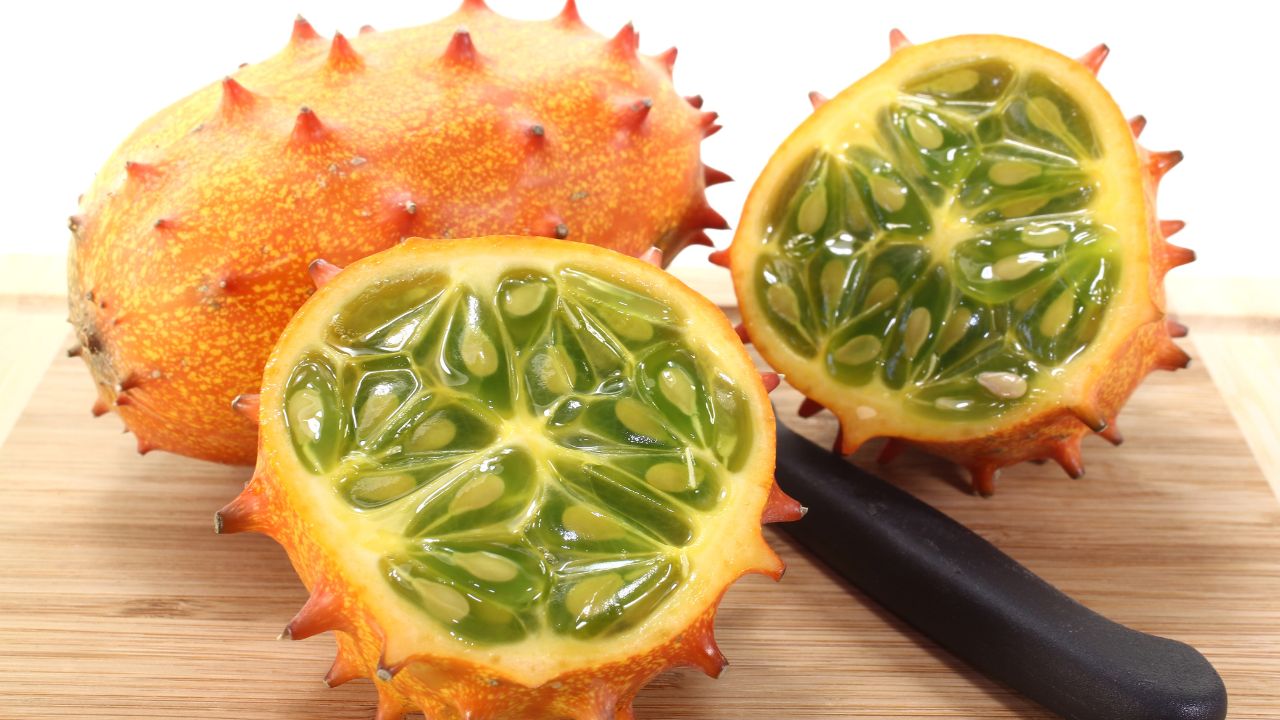
7. Kiwano
Kiwana are typically known as horned cucumber or horned melon. This describes their appearance very well.
Kiwano melons have a thick orange skin with spikes. The flesh inside is a bit like jelly as it contains a lot of water.
However, kiwanos taste very sweet. Unfortunately, it also contains a lot of seeds that you will need to scoop out when you want to eat this melon.
8. Kakadu Plum
Kakadu plum vaguely resembles a traditional, green plum with its firm skin and a light green flesh. However, it looks like a small, smooth pear.
This plum variety has a subtle taste of pear and stewed apple together with some citrus and floral flavors.
This beautiful taste mix makes kakadu plums the perfect ingredient for many relishes, jams and sauces.
9. Kwai Muk Fruit
Kwai muk fruit was initially an experimental fruit that was cultivated in Florida. However, the plant is native to China.
Kwai muks have an unusually knobbly shape. They look like a stone painted in orange. These fruits ripen into a yellow color and they inside is red to orange.
You can eat kwai muk fruits with a little bit of salt or sugar syrup fresh. But they are also perfect fruits for preserves, such as jelly and jam.
Kwai muk trees are very popular as commercial trees because they can produce up to 2,000 fruits a year. This being said, you may only find them in Asia or special fruit stores.
10. Kutjera Fruit
Kutjera fruit originally comes from Australia where it’s a well-known fruit for centuries.
Kutjera is also commonly known by its local name Australia desert raisin. And that’s also what it looks like.
Kutjeras have a brownish skin with a caramel sweet taste. While the fruit initially looks like a grape, it gets wrinkly as it ripens and dries.
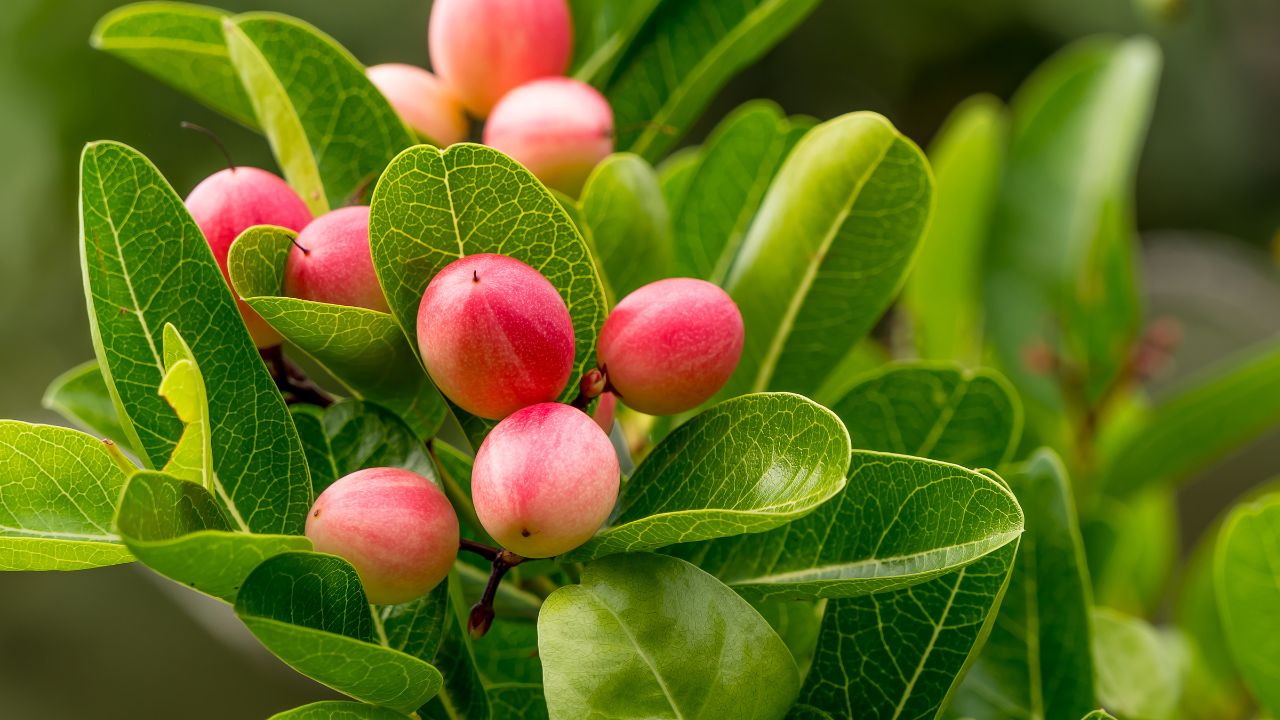
11. Karonda Fruit
Karonda fruits are small berries that come from the area around the Himalayas. Karonda trees bloom and produce fruit at unusual times around the year.
However, karonda fruits are typically harvested between August and October.
You can find karondas in a variety of different colors. This being said, they always have the same size and oval shape.
Karonda fruits taste sweet but they also have a subtle tart, sour and bitter taste with floral notes.
These unique fruits starting with the letter K are rich in vitamin C which makes them also a useful herbal medicine to boost your immunity and brain activity.
12. Kepel Fruit
Kepel fruit comes from the area around Java. While it resembles lychee on the outside, it has a brown color when it fully ripens.
Plus, Kepel fruit takes a relatively short amount of time until you can eat it. The yellow flesh on the inside tastes sweet with a tropical aroma like mango or papaya.0
13. Kahikatea Fruit
The kahikatea tree is the tallest native tree in New Zealand where it grows in wet lowland forests.
The kahikatea fruit has a beautiful bronze color but the size resembles that of small berries.
But when you look at these small berry fruits, you will notice something odd about them. The fruit has two parts.
One part is the orange berry and the other is the dark purple seed that seems to be stuck to the fruit.
Both of these fruit segments also have a slightly different texture and taste. Many describe the kahikatea fruit to taste sweet but without any other significant flavor.
That’s why, they are rarely eaten raw. However, you can use them to make spruce beer or feed birds that love these berries.
14. Kumquat Fruit
The kumquat is becoming more popular around the world. It originates from China where it grown between October and June.
You can also grow the small kumquat tree at home or in your backyard when you live in smaller climates.
The kumquat fruit resembles an orange but it’s slightly smaller. Depending on the kumquat variety, there are oblong or oval shapes.
Kumquats often have a sweet and juicy taste with a mild acidity.
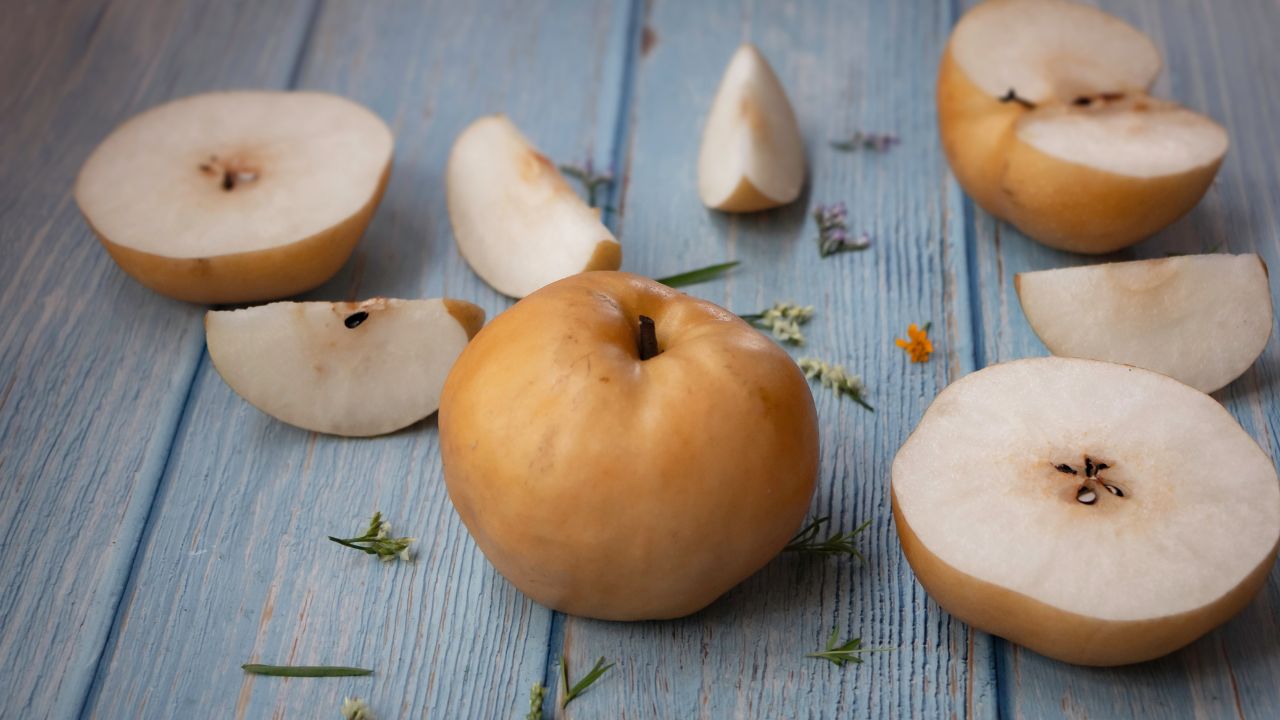
15. Korean Pear
As its name suggests, the Korean pear comes from Korea but it is also very popular in China and Japan.
Korean pear trees have been grown there for thousands of years. They are even given as small gifts for special occasions.
The Korean pear fruit has a smooth brown skin with a deliciously sweet flesh.
16. Kawakawa
Kawakawa can only be found in some parts of New Zealand where the fruits are harvested between January and March. The tree is a member of the black pepper family.
Only the female kawakawa tree produces flowers as well as the small berry fruits. The bright orange kawakawa fruit looks a bit like black pepper but it tastes more like passion fruit.
The best way to use kawakawa fruit is by adding it into your salad. It is also said to improve stomach upsets and kidney issues when you make it into a tea.
17. Kantola Fruit
Kantola is one of the most popular fruit in Asian cuisine. It is usually stuffed with spices. You can also serve it together with a fish dish.
Kantola is part of the bitter gourd family but it doesn’t actually taste very bitter. This being said, kantolas are typically used as vegetables and for savory dishes.
It has a green skin that you can peel off to get to the red and yellow pulp on the inside.
Kantola is said to be great for everyone who is watching their weight. It also contains antioxidants that are believed to help with skin issues and anti-aging.
18. Keitt Mango
Keitt mangos come from one of the most famous mango-growing state in the USA, Florida. Saying this, these mangos are also commercially grown in other parts of the world.
When you are buying a mango, then it is very likely that it is a Keitt mango variety. They have a green to yellow skin color with a yellow to orange flesh.
These mangos are perfect for mango smoothies or just as an addition to your fruit salad.
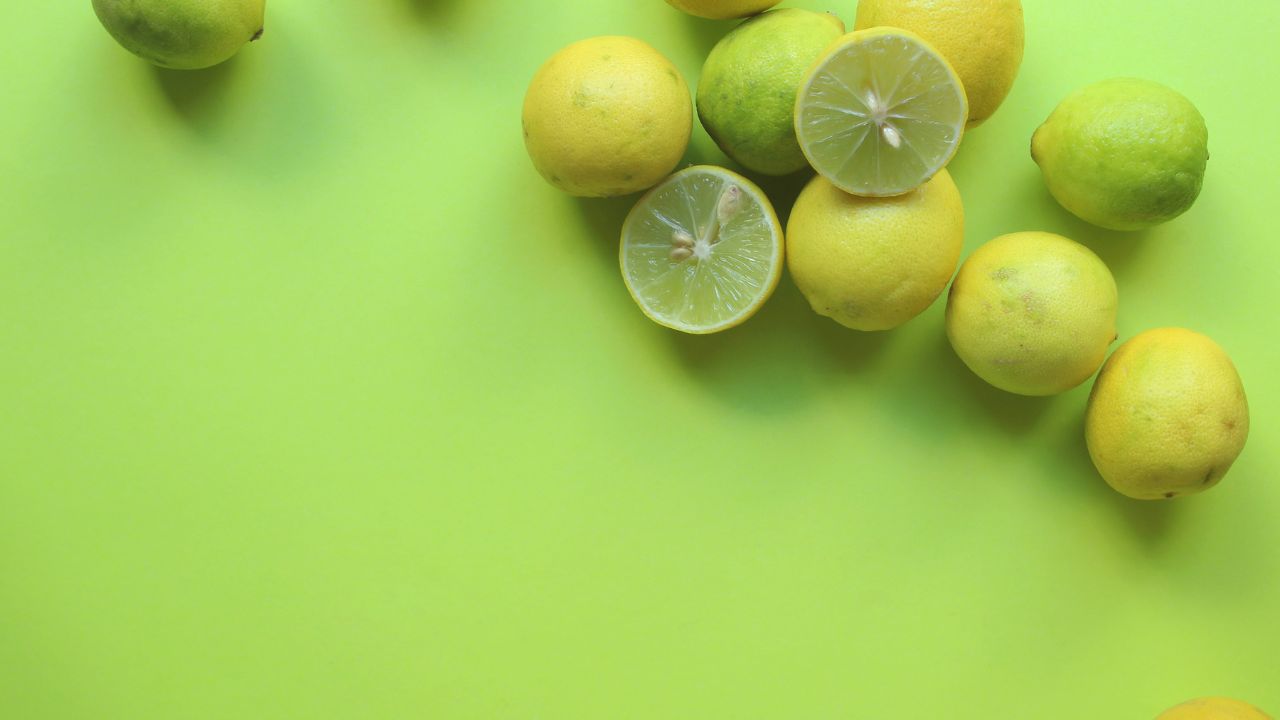
19. Key Lime
Key limes are not so well known for their taste but the flavor they create in cocktails and mocktails.
Also known as Mexican lime, this citrus fruit originally comes from Indonesia and Malaysia but it is now cultivated in other parts of the world.
Key lime fruits are a little sharper in taste than other lime varieties. This makes them not just fantastic for alcoholic drinks but also cakes, sweet desserts and some savory dishes.
20. Korlan Fruit
Korlan fruit originates in Southeast Asia. This tropical fruit is often confused with lychees. While it has the rough, red skin, korlan fruit tastes both sweet and sour.
Many people also believe that this fruit has some medicinal properties. It is said to regulate blood sugar levels and improve concentration.
21. Kundang Fruit
Commonly known as plum mango or Marian plum, there are actually two varieties of Kundang fruit. One sweet variety and one sour variety.
Unlike with other fruits, you can eat the entire fruit, including skin and the flesh. It’s ideal for jam, soup and even a delicious fruit salad.
22. Kowai
Kowai fruit comes originally from East Africa. It has a smooth outer skin that turns bright red when ripe.
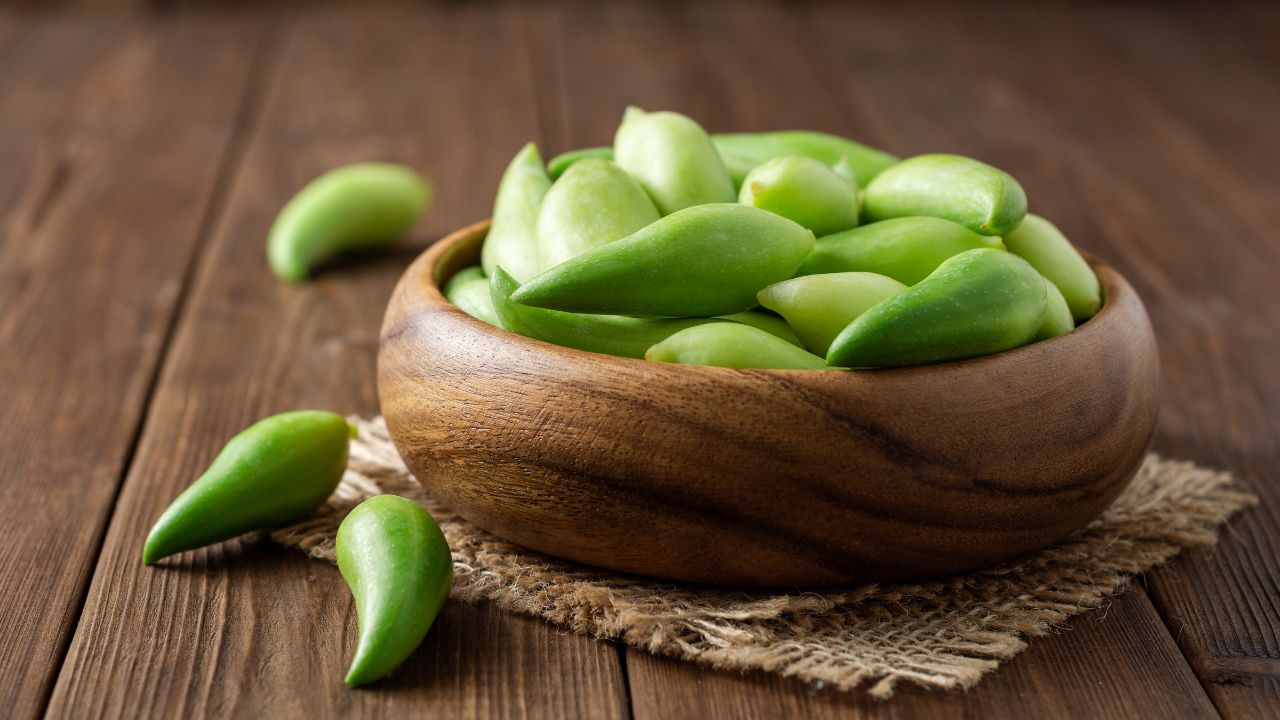
23. Kaywa
Kaywa comes from South America where it has been used as a staple food for many centuries.
This fruit has a light green color with unusually-shaped seeds on the inside.
Frequently Asked Questions
What Do You Use Kaffir Lime Leaves For?
Just like kaffir lime fruit, the leaves of the kaffir lime are aromatic. They are typically used in many Asian dishes, including fragrant fish curry and coconut-based broth.
Why Is Kakadu Plum Good For Your Skin?
Kakadu plums contain a large amount of vitamin C that are good for your immune system as well as your skin.
While there are no studies to support this evidence, some people believe that kakadu plum can promote collagen production which makes your skin look more firm.
Are Kiwano Melon Seeds Poisonous?
No, kiwano melon seeds aren’t toxic. In fact, these seeds are edible and you can scoop them out of this tasty fruit together with the flesh.
However, you can also easily remove the seeds if you prefer not to eat them.
Final Thoughts
From kumquat to kiwi, there is a wide variety of different fruits that start with K. They all have their own individual flavor and uses around the world.
- 15 Traditional Greek Breads - July 31, 2023
- 30 Delicious And Gluten-Free Cookie Recipes - July 29, 2023
- 30 Of The Best European Desserts - July 29, 2023
